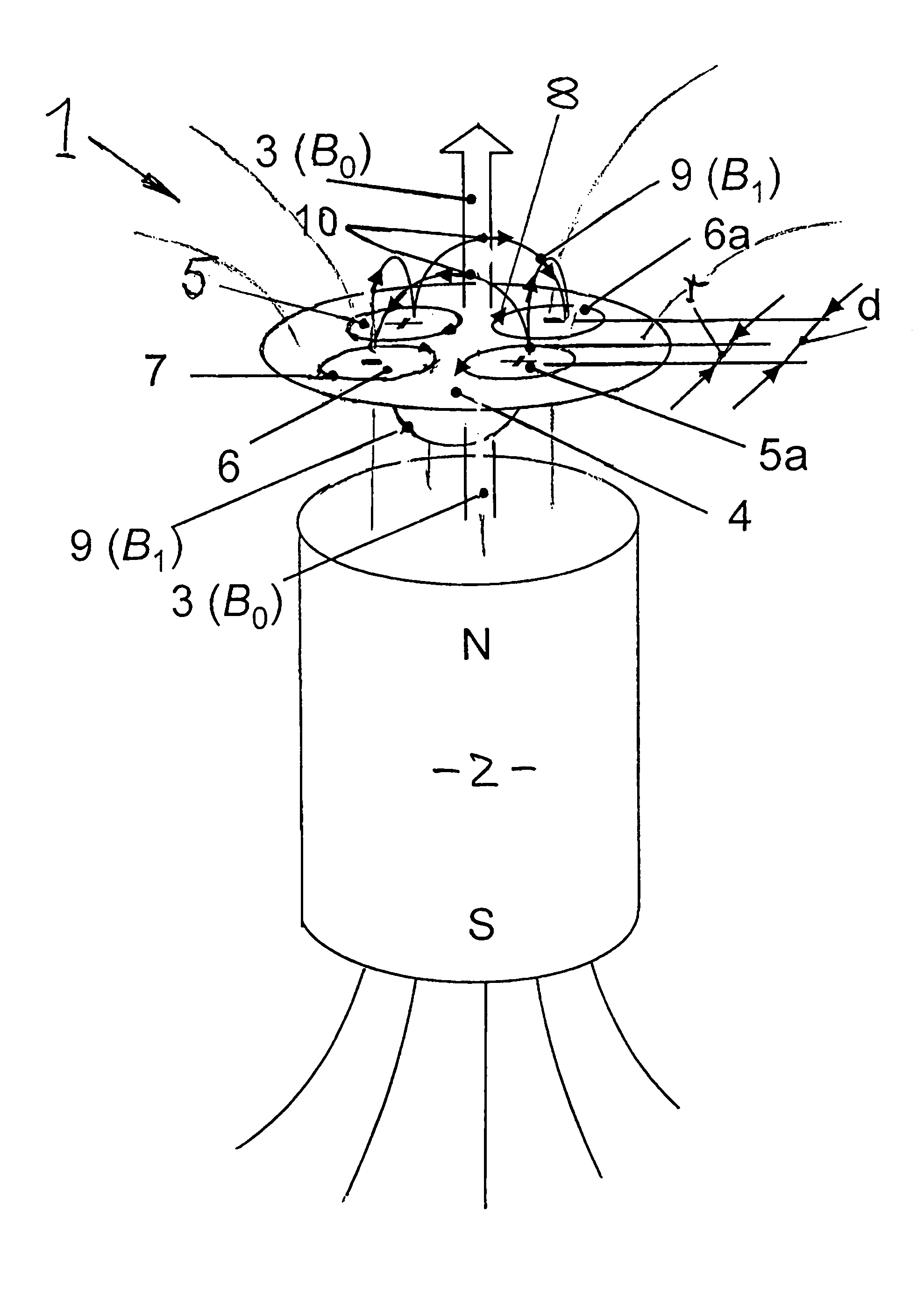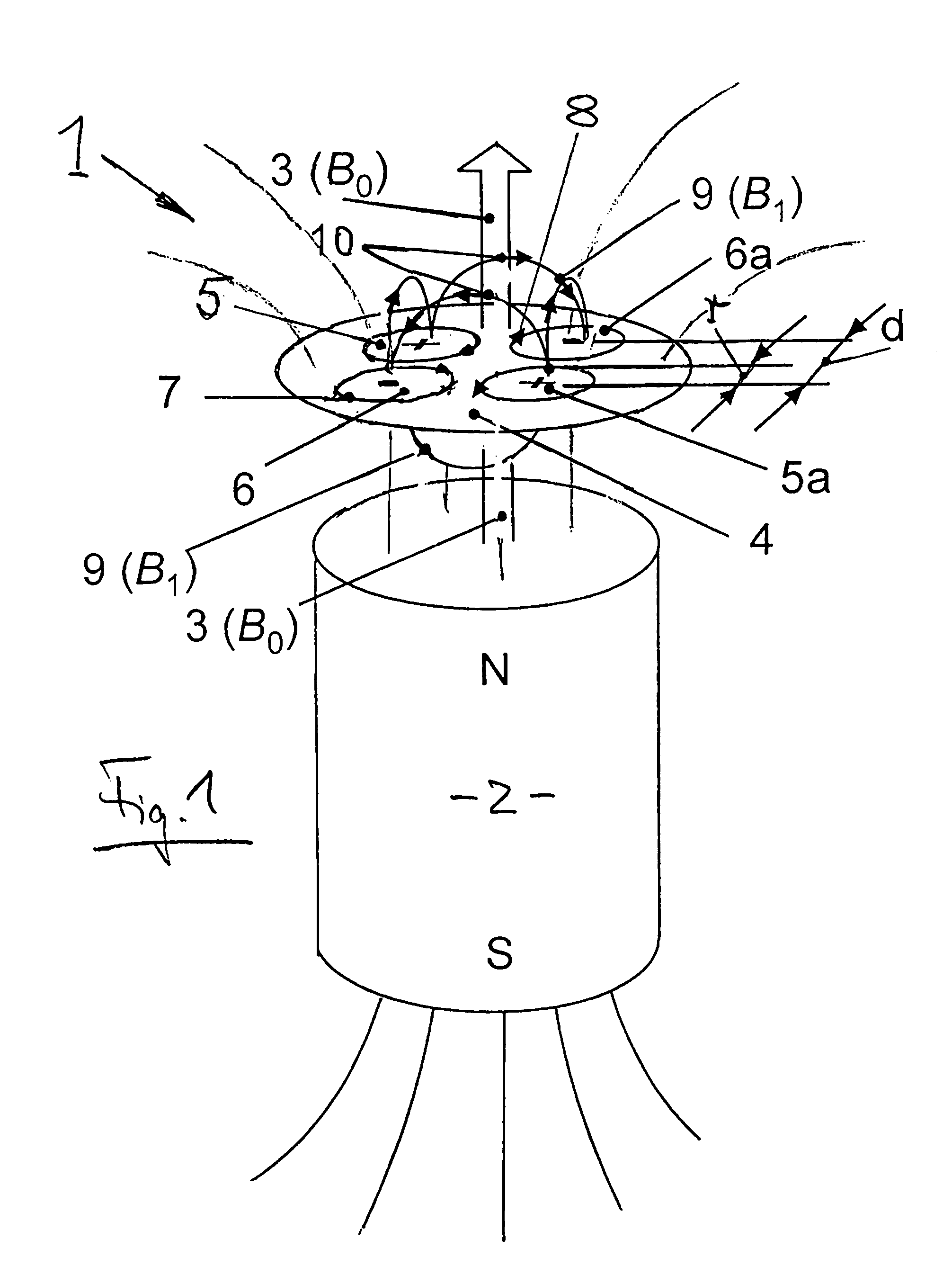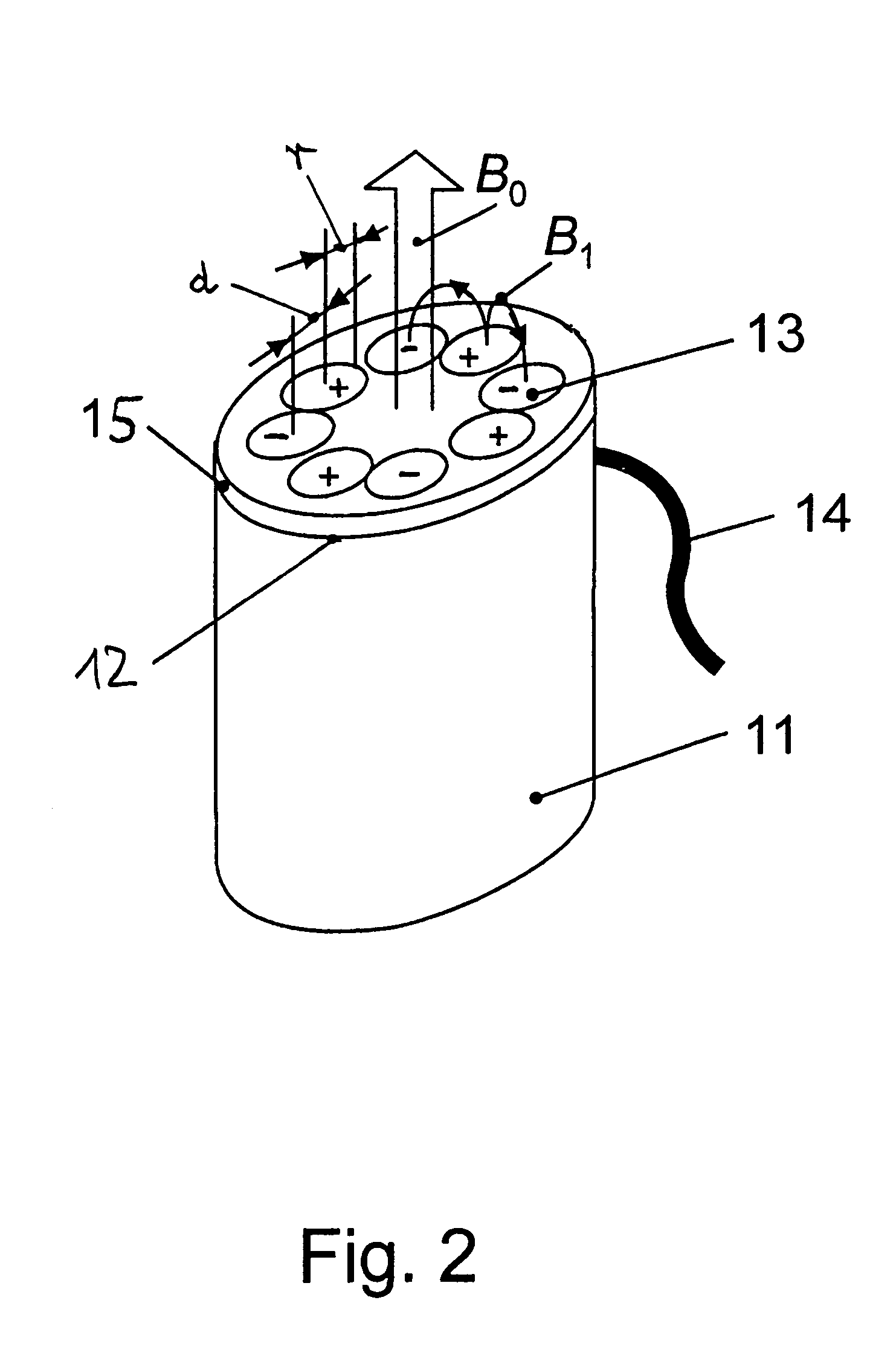NMR probe for material analysis
a technology of nmr-mouse probe and material analysis, which is applied in the direction of geological measurements, analysis using nuclear magnetic resonance, reradiation, etc., can solve the problems of insufficient signal-to-noise ratio and unsatisfactory yield of measuring signals from volume area excited by nmr-mouse prob
- Summary
- Abstract
- Description
- Claims
- Application Information
AI Technical Summary
Benefits of technology
Problems solved by technology
Method used
Image
Examples
Embodiment Construction
[0028]In FIG. 1, the principle on which the invention is based is explained on the basis of a particular embodiment. FIG. 1 shows schematically an NMR probe 1, for example of the type NMR-MOUSE, in a static polarization field B0, which is generated by a permanent magnet 2 with a magnetic north (N) and south (S) pole, and the magnetic field lines 3 thereof, with several radio frequency coils (RF-coils) 5, 5a, 6, 6a being arranged in a plane extending normal to the polarization field B0. Upon use of the NMR-probe for material analysis the polarization field B0 serves for the polarization of the nuclear spins in the material which is to be examined; and the RF coil for the generation of pulsed magnetic excitation field B1, which is super-imposed on the highly inhomogeneous time-constant permanent magnetic polarization field B0 for the excitation of nuclear spin echoes (S). The obtained nuclear spin echoes are the characteristic values for the material to be examined by the NMR probe in...
PUM
| Property | Measurement | Unit |
|---|---|---|
| distance | aaaaa | aaaaa |
| distances | aaaaa | aaaaa |
| distances | aaaaa | aaaaa |
Abstract
Description
Claims
Application Information
 Login to View More
Login to View More - R&D
- Intellectual Property
- Life Sciences
- Materials
- Tech Scout
- Unparalleled Data Quality
- Higher Quality Content
- 60% Fewer Hallucinations
Browse by: Latest US Patents, China's latest patents, Technical Efficacy Thesaurus, Application Domain, Technology Topic, Popular Technical Reports.
© 2025 PatSnap. All rights reserved.Legal|Privacy policy|Modern Slavery Act Transparency Statement|Sitemap|About US| Contact US: help@patsnap.com



